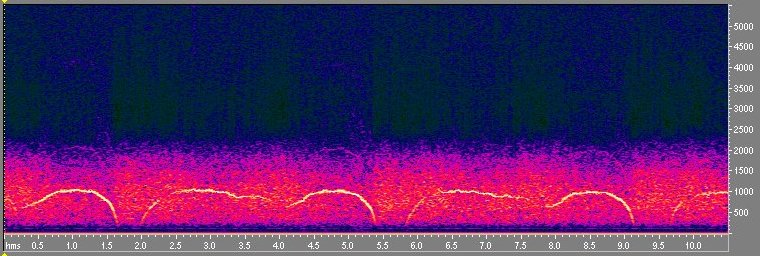
Vanguard 1 was launched aboard the oft-troubled Vanguard rocket in March 1958. The transmitters were approximately 10 mW in power and transmitted on 108.0 MHz and 108.3 MHz. The only telemetry transmitted was the package temperature. This was indicated by the difference between the two transmitter frequencies which varied with temperature. The solar cells were manufactured by Bell Laboratories.
The signals were received by Roy Welch on a homemade VHF converter in front of a National NC-300 Amateur Band receiver. The signals were continuous carrier with no apparent audio modulation. Therefore, the recordings were made with the receiver Beat Frequency Oscillator (BFO) turned on in order to produce an audible tone heard in the recordings.
Listen to these two recordings. In this recording made shortly after launch (31 kB Mp3) you can detect a rapid spin modulation on the signal and can determine that the satellite seemed to be spinning fairly rapidly. In this recording made approximately one year after launch (31 kB mp3) you can tell the satellite is turning very slowly. By this time the batteries had failed and the satellite was powered only by the few solar cells on the surface of the satellite. The satellite was very small, not much larger than a large grapefruit, so there wasn't room for many solar cells. The transmitter frequency varies as the solar cells slowly turn into and out of the sunlight.
Sometimes the signal would disappear when no solar cells were exposed to the sun. It was easy to determine when Vanguard 1 went into the shadow of the earth, by the rapid change in frequency and abrupt loss of the signal altogether. This is not demonstrated in this recording.

![]()